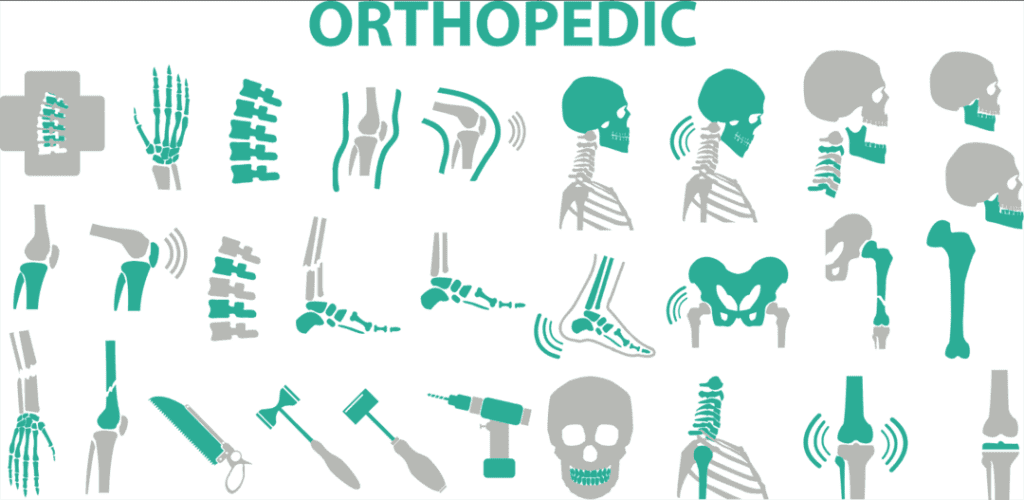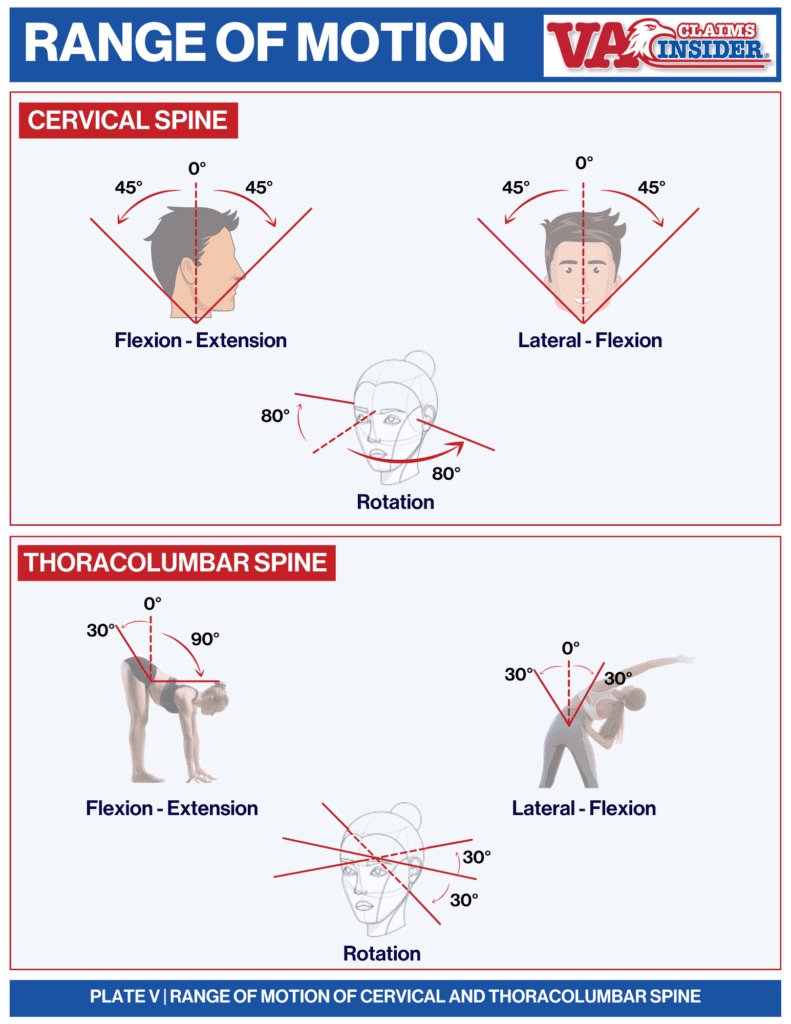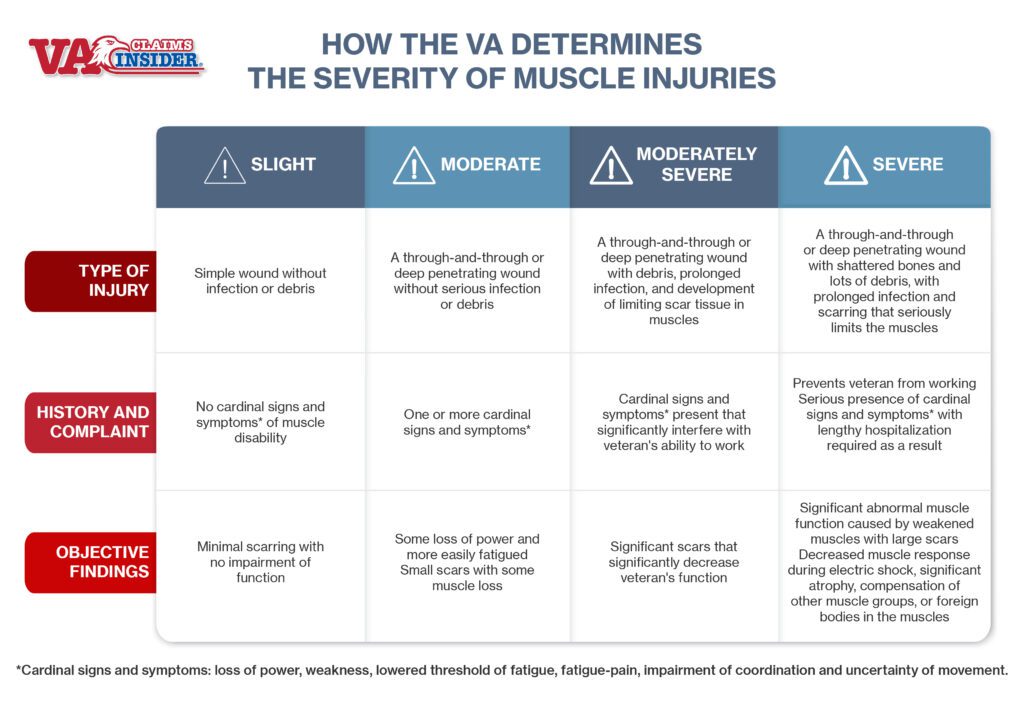How to Service-Connect Your Orthopedic Disabilities
If you’re a veteran dealing with pain from an orthopedic condition, you’re not alone. Due to the extra bodily wear and tear brought on by many high-risk and endurance military activities, veteran orthopedic conditions are extremely common. According to the VA, over 10.7 million veterans receive compensation for service-connected orthopedic disabilities as of 2020.

- How to Service-Connect Your Orthopedic Disabilities
- What exactly is an orthopedic condition?
- What VA orthopedic conditions qualify for VA Benefits?
- Disability Ratings for Orthopedic Conditions
- Joint Disabilities
- Does the VA give a rating for arthritis?
- How do I prove VA disability for back pain?
- What is the percentage of disability for knee pain from the VA?
- Orthopedic Muscle Conditions
- How do I get my orthopedic condition service-connected by the VA?
- What claims can I file as secondary to orthopedic conditions?
- About the Author
You DESERVE a HIGHER VA rating.
WE CAN HELP.
Take advantage of a FREE VA Claim Discovery Call with an experienced Team Member. Learn what you’ve been missing so you can FINALLY get the disability rating and compensation you’ve earned for your service.
What exactly is an orthopedic condition?
Orthopedic conditions arise from injuries or diseases that affect the musculoskeletal system. The musculoskeletal system consists of muscles, bones, nerves, joints, ligaments, tendons, and other connective tissues. Damage to any of these tissues or structures can come from injuries or excessive wear and tear (as well as chronic diseases).
A VA disability claim for an orthopedic condition is one involving your joints or muscles. Your orthopedic conditions could affect your knees, hips, back, shoulders, elbows, wrists, neck, feet, or ankles. Veteran orthopedic conditions can also involve bones, ligaments, tendons, and cartilage.
The VA uses the term “musculoskeletal disabilities” instead of “orthopedic disabilities,” but they’re the same thing.
Read on to learn more about veteran orthopedic conditions and how and when to file a VA claim for your orthopedic condition.
What VA orthopedic conditions qualify for VA Benefits?
There are numerous veteran orthopedic conditions. Five out of the top ten most common service-connected VA disabilities are orthopedic disabilities.
The most common veteran orthopedic conditions are limited knee movement, back pain, paralysis of the sciatic nerve, and limited arm and ankle movement. While these are typical examples, many other orthopedic conditions qualify for VA benefits.

Disability Ratings for Orthopedic Conditions
VA ratings for orthopedic conditions generally range from 0% to 100% across various disabilities.
Any condition brought on or made worse by your military service that impacts your joints, muscles, bone fractures, spine, or amputations could be rated as an orthopedic disability if you meet certain criteria. At the very least, strains, sprains, and conditions with “painful motion” can be rated at 10%.
There are a few different factors the VA will consider when evaluating your orthopedic condition for a disability rating. These factors involve muscle and joint function.
At the very minimum, the VA will typically look at the range of motion of the joint or muscle. The degree or severity of any limitation of motion, or evidence that demonstrates you’re experiencing functional loss from your disability, will help determine your VA rating.
Understanding Range-of-Motion Testing
Range-of-motion testing is one of the main ways the VA determines the severity of your orthopedic disability and therefore what rating you’ll receive. There are many different types of motion, including:
- Flexion – how far you can bend a joint
- Extension – how far you can extend a joint
- Lateral flexion – how far you can bend joints sideways (typically your torso and neck)
- Rotation – how far you can rotate joints (typically your torso and neck)
One option to help you learn for yourself how severe your limitations are is to purchase a tool called a digital goniometer, which measures your range of motion. Doctors must use this tool when evaluating your condition, or the VA will not acknowledge the evaluation when it reviews your records. This tool will also be used during your compensation and pension exam.
The VA uses diagnostic codes to show how the VA rates specific service-connected conditions. The diagnostic code that the VA uses will also impact your rating.
There are hundreds of different musculoskeletal disabilities (diagnostic codes) under which the VA can classify your orthopedic disability. Each of these codes refers to different conditions of different joints and muscles.
It’s a good idea to understand the codes that apply to your orthopedic condition to help you prepare for your claim. You can find all the orthopedic diagnostic codes in the VA Schedule for Rating Disabilities (VASRD) under the Musculoskeletal System.
Below, we break down the VA’s general criteria for evaluating your orthopedic disabilities, and then detail the VA claim considerations for some specific common conditions.

Joint Disabilities
The VA will use specific criteria when evaluating your joint disabilities. Some of these criteria include:
- Less movement than normal
- More movement than normal
- Weakened movement
- Excess fatigability
- Pain during movement
- Arthritis
What is the VA disability rating for joint pain?
Joint pain can be debilitating. The rating you’ll receive for joint pain depends on how much joint pain impacts your life and ability to function. The number of painful episodes you experience per year and the type of pain or arthritis will directly affect your rating level. You could be rated from 10% to 100%. Your rating depends on your specific orthopedic disability.
The VA Painful Motion Rule for your joints
The VA “painful motion rule” applies to your joints. If you’re a veteran experiencing joint pain, you’ll receive at least a 10% disability rating for a body part if you can prove that you’re experiencing pain when moving the joint. Your doctor must document and diagnose this pain in order for the painful motion rule to apply.
When making a rating decision, raters will look for specific evidence of pain, including notes from your doctor that show limping, wincing, or other painful expressions during your exam. Don’t cover up or stifle reactions when you feel pain during your medical exams. Remember, don’t have your best day.
Does the VA give a rating for arthritis?
Yes, the VA ratings for arthritis are under two main categories: degenerative arthritis and rheumatoid arthritis. However, arthritis can describe about 100 diseases and conditions impacting the joints and surrounding tissue. An arthritis VA rating can range from 10% to 100%.
Degenerative arthritis (Diagnostic Code 5003) results from the wearing down of the cartilage between your joints. This type of arthritis is rated at the 10% and 20% levels. This rating is based on the limitation of motion of your joint (or joints) and confirmed by swelling, joint instability, muscle spasms, or evidence of painful motion.
The VA rates degenerative arthritis at these levels:
- 10% – you have x-ray evidence of two or more joints impacted
- 20% – you have x-ray evidence of two or more joints impacted that occasionally have incapacitating flare-ups
Rheumatoid arthritis (RA) (Diagnostic Code 5002) is an autoimmune condition in which your body attacks your joints, resulting in painful wrists, hands, elbows, knees, feet, and ankles. RA is rated from 20% to 100%. The VA classifies rheumatoid arthritis into four rating levels:
- 20% – you experience two or more incapacitating episodes per year
- 40% – you experience three or more incapacitating episodes per year, and your overall health is definitively impaired
- 60% – you experience four or more incapacitating episodes per year, or a decline in health that could include weight loss, painful motion, or the functional loss of the use of one or more limbs
- 100% – usually requires x-ray evidence to show that your symptoms are completely incapacitating
Since arthritis typically worsens over time, you can request a higher rating later. You’ll need to prove that your symptoms have worsened. You can also pursue different ratings for different joints to increase your combined disability rating.

What percentage of disability is tendonitis?
Tendonitis occurs when the tendons in a joint become inflamed. This inflammation can cause pain and limit your range of motion in that joint.
Tendonitis is usually caused by repetitive movements or an injury. If you performed manual labor during your military service, this could be an underlying cause for your tendonitis.
Symptoms of tendonitis include:
- Pain during movement of the joint
- Tenderness
- Swelling
The VA evaluates tendonitis based on the symptoms you’re experiencing and how much your range of motion is limited. The VA uses the same rating criteria as it does for degenerative arthritis (Diagnostic Code 5003), as detailed earlier, and you’ll receive either a 10% or 20% disability rating.
How do I prove VA disability for back pain?
A major percentage of veterans deal with low-back pain as a result of their service. When it comes to back pain, the VA primarily considers two areas of your body for determining a VA disability rating. These two areas are your neck and your lower back.
At a minimum, back pain can be rated by range of motion limitations, usually resulting in at least a 10 to 20% disability rating. Depending on how limited your range of motion is, or your degree of ability to bend at the waist, you could qualify for a range of motion rating.
The VA evaluates back conditions differently, so the underlying cause of your back pain will impact the specific criteria the VA uses to determine your rating.
If you experience more pain during flare-ups of your back condition, the frequency of your flare-ups and severity of the pain will likely increase your rating.
Your back or neck pain could be classified under one of the diagnostic codes below. Many of these result in pain or limited range of motion:
Lumbosacral or cervical strain (Diagnostic Code 5237) is an injury of the tendons, ligaments, or muscles in your low back or neck. This type of disability is usually caused by overuse or trauma. This condition is rated from 10% to 100%, depending on how limited your range of motion is.
Spinal stenosis (Diagnostic Code 5238) is a slow narrowing of the spinal canal that creates painful pressure and compression on your spine. The VA rates spinal stenosis from 10% to 100% based on how limited your range of motion is for your neck, lower back, or both.
Intervertebral disc syndrome (IVDS) (Diagnostic Code 5243) is the degeneration of one or more discs that separate the bones in the spine, causing pain in the back, neck, legs, and arms. This condition is rated from 10% to 60% depending on the total length of time of your incapacitating flare-ups during the last year:
- 10% – incapacitating episodes with an entire duration of more than one week but less than two weeks
- 20% – incapacitating episodes with an entire duration of more than two weeks but less than four weeks
- 40% – incapacitating episodes with an entire duration of more than four weeks but less than six weeks
- 60% – incapacitating episodes with an entire duration of at least six weeks
Degenerative disc disease (DDD) (Diagnostic Code 5242) impacts the back and neck from wear and tear on a spinal disc, usually causing low-level chronic pain. DDD is rated at either 10% or 20%.
Osteoarthritis (Diagnostic Code 5003)is a condition with bone spurs where veterans usually experience herniated discs, bulge discs, or compressed discs. This condition is rated the same as degenerative arthritis, at either 10% or 20%.
Read our post on VA disability rating for back pain for more information.
What is the percentage of disability for knee pain from the VA?
If you’re dealing with knee pain, you’ll likely be rated from 10% to 30% for your knee disability (although you could be rated up to 100%), depending on the condition of your knee. At the minimum, the VA’s painful motion rule applies, and you’ll receive a 10% rating if you meet the requirements.
When filing for a VA disability rating for knee joint pain, your knee could be rated under one of these VA disability diagnostic codes:
- You can’t fully bend your knee (Diagnostic Code 5260) – the second most common service-connected disability, rated from 10% to 50%
- You can’t fully straighten your knee (Diagnostic Code 5261) – rated from 10% to 50% based on severity
- Knee instability (Diagnostic Code 5257) – rated from 10% to 30%
- Knee stiffness (Diagnostic Code 5256) – known as ankylosis, this condition is rated from 30% to 60% based on how much it impacts a veteran’s mobility
- Total knee replacement (Diagnostic Code 5055) – veterans are rated at 100% for one year post-surgery. After that, the minimum rating is 30% but depends on your symptoms. If you have a partial knee replacement and are experiencing symptoms, you’ll be rated by your symptoms.

If you’re dealing with knee pain, you may also be experiencing other issues caused or worsened by this condition. Read our post on conditions secondary to knee pain to learn about your eligibility for claims secondary to your knee issues.
Sciatica
Over 1 million veterans receive compensation for service-connected sciatica. Sciatica is a nerve condition where the sciatic nerve is compressed due to another underlying condition (typically a herniated disc or vertebrae condition), resulting in significant pain from your lower back down through your legs. Symptoms usually include numbness, muscle weakness, burning, or tingling.
A sciatica nerve VA rating varies from 10% to 80%, depending on your symptoms.
- Paralysis of the sciatic nerve (Diagnostic Code 8520) causing mild to severe paralysis is rated from 10% to 80%
- Neuritis of the sciatic nerve (Diagnostic Code 8620) or inflammation resulting from spinal column degeneration is rated from 10% to 60%
- Neuralgia of the sciatic nerve (Diagnostic Code 8521) or traditional sciatica caused by pressure along the sciatic nerve is rated at either 10% or 20%
You can learn more in our post on how to file a VA claim for sciatica.
Orthopedic Muscle Conditions
There is no specific VA disability rating for chronic pain. If you file a claim for muscle pain, the VA will rate you based on the functional impact of your symptoms.
The VA rates muscle injuries on a scale from mild to severe. Your rating will depend on where you fall within this scale. Let’s break down this scale. Disabilities for muscle injuries are classified as:
- Slight
- Moderate
- Moderately severe, or
- Severe

If you’re unable to work due to your chronic muscle pain, Total Disability Individual Unemployability (TDIU) may be something to consider.
How do I get my orthopedic condition service-connected by the VA?
To be eligible for compensation for your orthopedic disability, you must prove that your condition resulted from your military service. The VA also calls this service connection.
The VA has three requirements to prove your orthopedic condition is service-connected. You must:
- Have a current medical diagnosis of an orthopedic disability
- Have an event, injury, or diagnosis that happened while you were serving
- Have a link, or nexus, that connects your orthopedic diagnosis to your in-service event, injury, or diagnosis
Even if you had an orthopedic issue before service, you might still be eligible for disability benefits if your condition was made worse by your military service. You’ll have to provide evidence that something happened while serving that aggravated the condition and worsened it.
To service-connect veteran orthopedic conditions, you must show the VA how your condition impacts your ability to live everyday life. The more evidence of this you have, the better. Examples include how your back pain prevents you from bending over or standing for long periods, or how your knee pain prevents you from using stairs.
What claims can I file as secondary to orthopedic conditions?
A secondary condition is any physical or psychological problem that is worsened by a service-related disability. There could be a wide range of disabilities resulting from your orthopedic condition.
If your orthopedic condition is causing another condition or making another condition worse, that disability could be used for a secondary disability claim. Here are a few examples:
Secondary orthopedic conditions
Imbalance or overcompensation for one orthopedic condition can often lead to another. For example, if you’re experiencing ankle pain, you could be favoring the other leg, leading to other disabling conditions such as neck pain, back problems, or issues with your hips.
Depression and anxiety secondary to an orthopedic disability
If your orthopedic disability is disrupting your life—preventing you from activities you enjoy, making it hard to be productive at work, impacting social life or increasing body mass, for example—it can lead to depression or anxiety. It’s important to seek help and get a medical diagnosis for any mental health issues. Depression can be rated from 0% to 100%, depending on severity. For more on getting a VA rating for depression, see our post on increasing your VA rating for depression.

IBS secondary to an orthopedic disability
If the medications you’re taking to address your orthopedic disability lead to IBS or other digestive system issues, those could be secondary conditions and can be rated from 0% to 30%, based on the severity and frequency of your symptoms.
We’ve only listed three examples, but if your orthopedic condition is causing other disabilities, be sure to pursue secondary service connection.
Even if you’re already service-connected for an orthopedic condition, you’re likely underrated for it—we find that orthopedic conditions tend to be “low-balled.” We can help you increase your rating, whether it’s an increase for your service-connected orthopedic disabilities or through secondary service connection.
NEED MORE ASSISTANCE?
Most veterans are underrated for their disabilities and therefore not getting the compensation they’re due. At VA Claims Insider, we help you understand and take control of the claims process, so you can get the rating and compensation you’re owed by law.
Our process takes the guesswork out of filing a VA disability claim and supports you every step of the way in building a fully-developed claim (FDC)—so you can increase your rating fast!
If you’ve filed your VA disability claim and have been denied or have received a low rating—or you’re unsure how to get started—reach out to us! Take advantage of a FREE VA Claim Discovery Call. Learn what you’ve been missing—so you can FINALLY get the disability rating and compensation you deserve!
We’ve supported more than 15,000 veterans to win their claims and increase their ratings. NOW IT’S YOUR TURN.
About the Author

About VA Claims Insider
VA Claims Insider is an education-based coaching/consulting company. We’re here for disabled veterans exploring eligibility for increased VA disability benefits and who wish to learn more about that process. We also connect veterans with independent medical professionals in our referral network for medical examinations, disability evaluations, and credible independent medical opinions and nexus statements (medical nexus letters) for a wide range of disability conditions.



